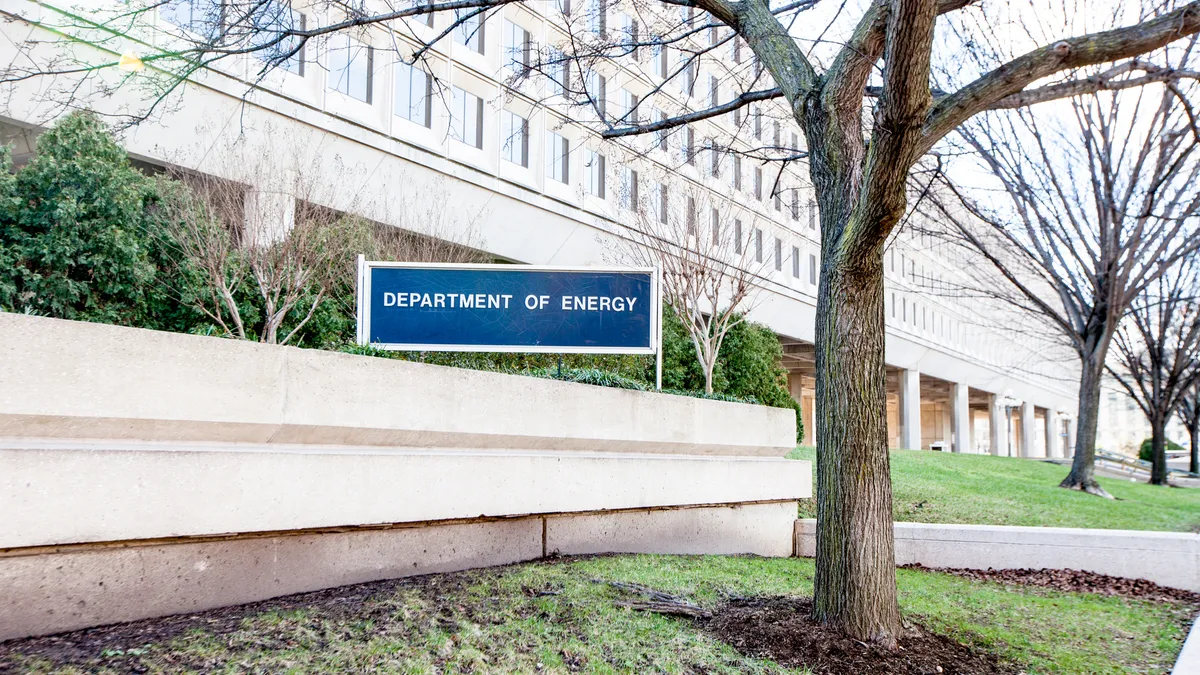Dive Brief:
- Twenty-five projects across 17 states have been selected for $38.8 million in funding to research and develop building decarbonization technologies as well as those that increase energy efficiency, electric load management and resilience, the U.S. Department of Energy announced Tuesday.
- The technologies could be used for “next-generation” retrofits of building envelope, lighting and HVAC systems; enhancing building resilience during extreme-weather events; or to allow buildings to provide electricity back to the grid, according to a DOE news release.
- Together, these technologies have the potential to not only lower energy costs and carbon emissions, but also reduce peak demand on the electric grid, benefiting “building owners and occupants across all building types, sectors and geographies,” DOE said.
Dive Insight:
The funding is the latest allocated through the 10-year-old Buildings Energy Efficiency Frontiers and Innovation Technologies, or BENEFIT, program. The program selects recipient projects based on criteria that include technical merit, market transformation plans and community impact, per DOE’s news release. The department’s goals include doubling the energy efficiency of buildings and reducing 90% of their emissions by 2050, DOE said Tuesday.
The BENEFIT projects support innovations across four topic areas: HVAC and water heating, roof and attic retrofits, building resilience and electricity capacity constraints and commercial lighting retrofits.
Awards for projects in the HVAC and water heating category include $2 million for GTI Energy to design and develop an oil-free compressor and expander for carbon dioxide heat pumps and $1.2 million for Effecterra to build and demonstrate a 25-ton commercial rooftop heat pump that uses a CO2 refrigerant.
Heat pumps that use carbon dioxide as a refrigerant can “significantly contribute to decarbonizing buildings,” especially during large-scale retrofits of older facilities, said Mahesh Ramanujam, president and CEO of the Global Network for Zero, an independent net-zero certification body. CO2 heat pumps can integrate into existing hydronic heating systems with minimal modifications, said Ramanujam, who previously served as CEO of the U.S. Green Building Council.
In the building resilience and electricity capacity constraints category, Stepwise Electric aims to use its $1.4 million award to further develop a modular electrical component for monitoring whole-building power draw related to products that range from electric vehicle charging, which it currently offers, to heat pumps and heat pump water heaters.
Biological Innovations and Optimization Systems plans to use its $1 million to develop a commercial lighting retrofit for troffers in partnership with Lumileds, DOE said.
A full list of the selected projects can be found here.














